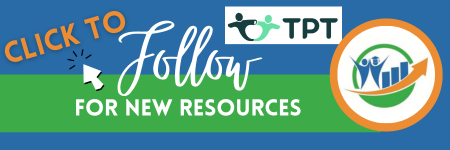7 Ways to Integrate Social Studies and Science into Your Reading Block
- Dianne McKinley
- Apr 29, 2018
- 3 min read
Updated: Jul 17, 2024

In order to become lifelong learners who understand scientific, historical, and social issues, students must be able to read the works of others, evaluate its worth, and share the results of their research and experience through writing. In this article, we will discuss 7 ways to integrate social studies and science into your reading block.
1. Self-selected Reading
Self-selected reading enables a student to choose a particular text to read. This can be effective for opening students to social studies content. One key to the successful integration of social studies and literacy is to collect a group of texts at different levels, genres, and viewpoints to maximize potential interest. This way, students are exposed to various text styles while immersing themselves in the content.
2. Read-alouds
Read aloud is an instructional practice wherein teachers read texts aloud to students. It’s an excellent way to engage students in the literary process. It can be used to introduce new topics, authors, and also to initiate discussions. Students often show an increased interest in reading the text after the teacher finishes reading to the class.
Benefits of a read-aloud include content information retention, vocabulary gains, and the application of new strategies when reading independently. Books that can be used to support social studies through read-alouds can be content specific or adaptable from non-content specific stories. Teachers can use read-alouds regardless of the subject matter. To find out more about how to best use read-alouds, check out In Defense of Read-Aloud: Sustaining Best Practice.
3. Reading Groups
Guided reading groups and literature circles can improve literacy in terms of reading comprehension and social skills. Reading groups promote discussions that lead to inquiry and critical thinking. It also fosters interaction, cooperation, and collaboration. To learn more about Guided Reading, read The Reading Strategies Book: Your Everything Guide to Developing Skilled Readers.
4. Shared Reading
Shared reading is the time when a teacher provides an opportunity for students to read with him/her. Invite students to join you in practicing reading skills. For example, you can use poems with a science theme. You can also use this time to weave in phonics practice based on the phonics patterns included in the poem. To find out more about Shared Reading, read The Shared Reading Coaching Tool.
5. Close Reading
Close reading provides students with text rich in details, helping them to become thoughtful readers. This isn’t an independent reading time, but a time for teachers to guide students as they build skills to become good readers. Integrating science can be done by using non-fiction science-themed passages. Every day of the week, there’s a different task for students to do with the same text. The advantage of this is that the routine stays the same and students know what to expect. To learn more about Close Reading, check out the book A Close Look at Close Reading: Teaching Students to Analyze Complex Texts, Grades K-5.
6. Technology
A device could be loaded with books, photos, and documents pertaining to specific events, eras, and notable people throughout history. Students could take notes directly and look up definitions instantly. Students may find an e-reader helpful to approach material they would otherwise avoid.
There is now a broad array of possibilities for students to view and interact with online literacy activities. By considering internet sources and e-readers as important literacy contributors, the method of teaching social studies expands. As technology improves, so shall its potential for use in the classroom. Get Kindle free for the first 30 days to use in your classroom today.
7. Current Events
By being aware of current events, students can have personal involvement and sense of responsibility. This encourages participatory discussion. Through the use of newspapers, magazines, and internet sources, students can develop reading habits and increase their awareness of what’s happening in the world. National Geographic and Time magazine both have publications in print and interactive websites that are great sources of information.
Conclusion
All subjects are important, including those that are not assessed on state standardized tests. Social studies and science both play important roles in developing the student intellectually, socially, and emotionally. By integrating these subjects into your reading block, you can help students in their quest for knowledge and learning. To find out more on how to best use your reading block, read The Big Book of Literacy Tasks, Grades K-8: 75 Balanced Literacy Activities Students Do (Not You!) (Corwin Literacy).
Read on: 10 Best Books for Teachers in 2020









